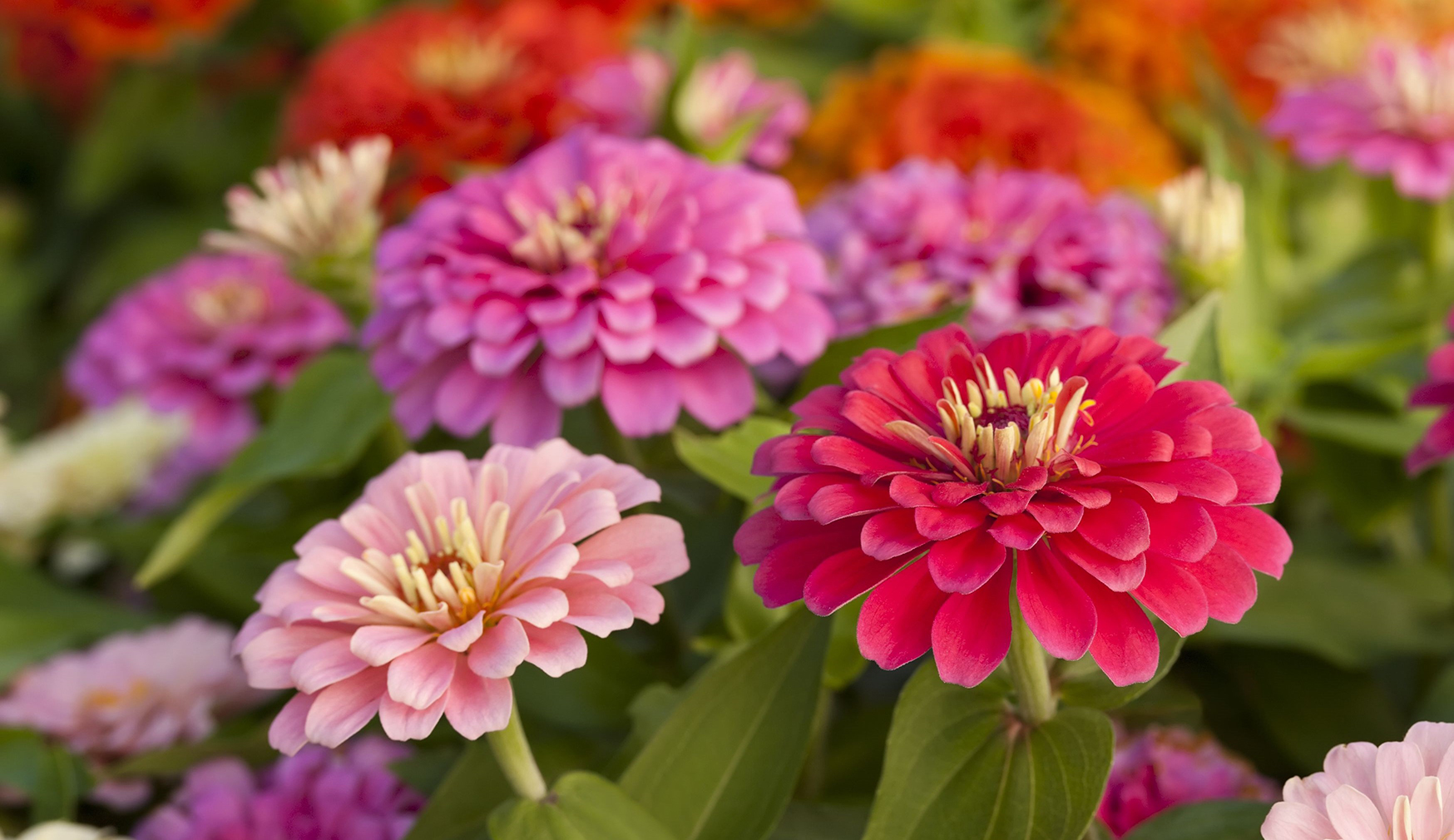Growing Zinnias

One of the easiest annuals to grow, zinnia flowers bring an explosion of color wherever they go. The show lasts from late spring until the first frost in fall. Butterflies and hummingbirds are attracted to the cheery flowers that bloom in nearly every bright color imaginable. They grow quickly and reliably, making them a great choice for first-time flower growers. Add in their low maintenance requirements and the variety of sizes and shapes, and you can’t lose.
Zones: Annual. Zinnias are appropriate for seasonal use in all zones.
Height/Spread: Varies by type. There are dwarf varieties 6 to 12 inches tall and wide, and others grow up to 4 feet tall and 1 to 2 feet wide.
Exposure: Full sun
Bloom Time: Late spring until first frost, but may show a slow-down in blooming at the peak of heat in summer.
Color: Flowers bloom in shades of orange, pink, purple, red, white and yellow and there are also bi-color and tri-color varieties. Leaves are pale to mid-green.
Characteristics: Zinnias come in a wide variety of flower shapes with stars, daisies, dahlias, spiders, buttons, domes, and quill-leaf cactus shapes. Within those shapes, there are also singles, semi-doubles and doubles.
Toxicity: Zinnias are safe to plant around animals because they are non-toxic to dogs, cats and horses.
Planting
When to plant zinnia
- As long as there is no further threat of frost, zinnias can be planted any time through the end of June. In fact, it’s a great idea to plant multiple rounds at 2- to 3-week intervals up until the end of June for non-stop blooming into fall.
Where to plant zinnia
- Locate your zinnias in an area that will get at least 6 hours of sun each day and where there is well-draining soil.
How to plant zinnia
- Zinnias are best started from seed and can be sown directly in the garden after the threat of frost has passed. If you’d like to get a jump on them and start earlier indoors, try peat pots or other containers that can be planted directly in the ground, as zinnias can be a bit finicky when transplanted. Sow seeds ¼-inch deep and follow spacing directions on seed package. Give them sunshine and water and you’ll have seedlings popping up in 4 to 7 days. Thin the seedlings to spacing of 6 to 18 inches (depending on variety) by snipping at the soil line with scissors. (Tip: Pulling out seedlings can disturb the roots of those left behind.) Zinnias grow quickly and you’ll have beautiful bright blooms in about 60 days.
Care
How to prune zinnia
- For taller varieties that you’d like to use for cut flowers, Floret Flower Farms recommends snipping out the center flower when the plants are about 18 inches tall, and although it “feels pretty counterintuitive at the time, it will encourage plants to begin branching low and ultimately produce much longer stems.” Spent blooms should be deadheaded to encourage and prolong further flowering.
How to water zinnia
- Water regularly, for a total of about 1 inch per week. Although they can tolerate dry conditions, they will do much better with consistent moisture in the soil. Keep excess moisture away from the foliage by watering at the base of the plant; this will help keep your plant healthy and prevent disease.
Propagation
- Seeds are easy to save by letting the flowers dry completely on the stem. Remove seeds by lightly crushing the dried seed head. Store the seeds in a cool, dry place for planting next spring. Keep in mind, however, that seeds saved from hybrid plants may not develop true to the parent plant.
Pests/Diseases
- Bacterial and fungal spots, powdery mildew and bacterial wilt can all be troublesome for zinnias. Keeping the foliage dry and providing good air circulation will go a long way toward prevention. Zinnias can also be host to caterpillars, mealybugs and spider mites. It’s best to remove caterpillars by hand, but mealybugs and spider mites can be treated with insecticidal soap. Try cultivars from the Profusion series for increased resistance to powdery mildew.
Website: www.gardendesign.com